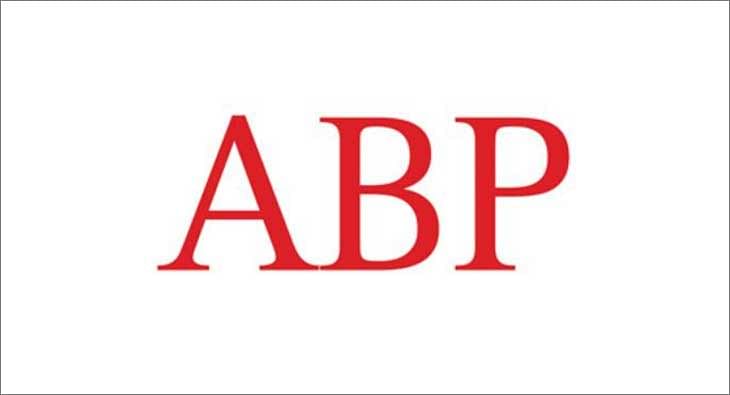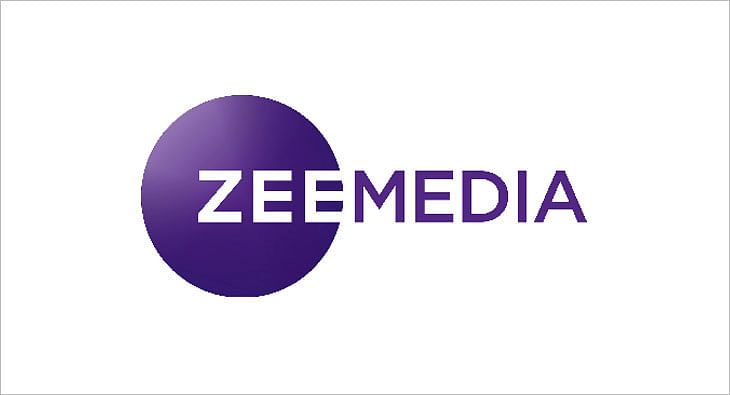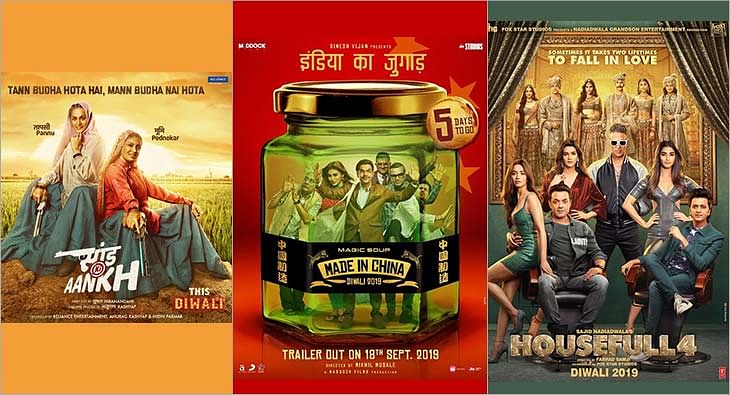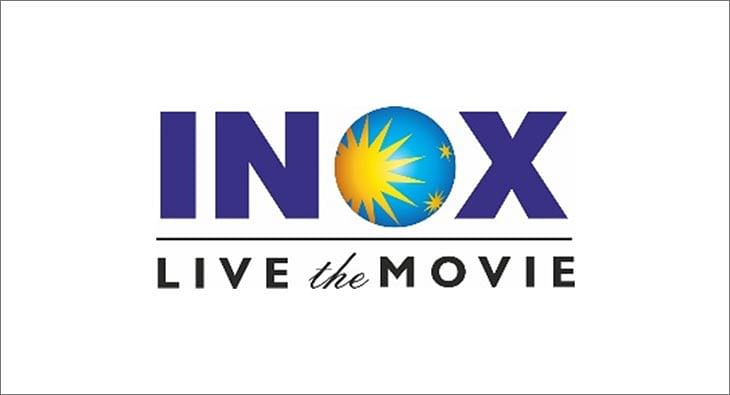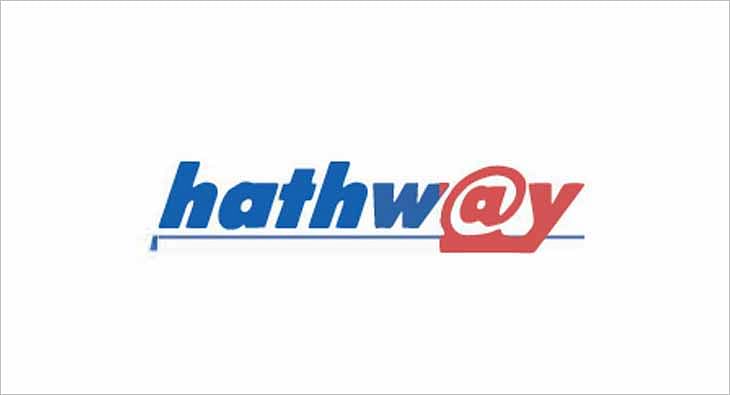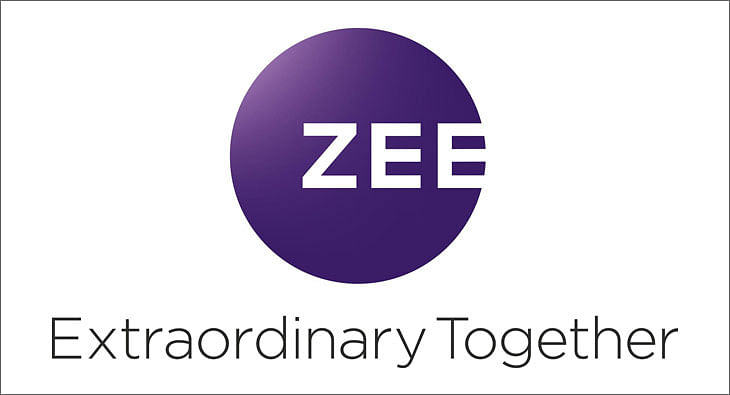IndustrySpeak: Copyright Act amendment: Broadcasters irked about not being consulted, FM players call it ‘draconian’
The Government has come in for a lot of flak from television and radio broadcasters over the proposed amendment to the Copyright Act of 1957. What has irked the broadcasters even more is that they were consulted even once by either the HRD Ministry or the MIB before proposing the amendments. exchange4media spoke to a cross-section of TV and radio broadcasters as well as government officials to gauge the industry reaction to the amendment and the implications.

The Government has come in for a lot of flak from television and radio broadcasters over the proposed amendment to the Copyright Act of 1957. What has irked the broadcasters even more is that they were consulted even once by either the Ministry of Human Resource Development (HRD) or the Ministry of Information and Broadcasting (MIB) before proposing the amendments.
The proposed amendment is said to have been made to the effect that till the time the compulsory licenses are granted by the Copyright Board for airing the contents, (which generally takes a very long period of eight to ten years), the broadcaster would be required to pay the amount demanded by Copyright societies, owners, lyricists and music companies which is not seen in good light by broadcasters. The fear is also that this amendment will only allow the music industry to demand more music royalty.
According to government sources, “The decision on the Copyright Amendment has already been taken and now hardly anyone will be consulted on it as the bill will be tabled in the parliament within 1-2 weeks of time.”
Rakesh Nigam, CEO IPRS said, “This whole issue on copyright amendment is blown out of proportion, infact this amendment has been pending since 2004 and why make this hue and cry at the last moment. This is a pressure tactic by the broadcasters to show the copyright society in bad light as the government in only trying to tighten the norms for version recording. These amendments were put up by the government along with the core group and this amendment has been pending from 2004 and nothing new has been added.”
“I don’t see why people need to worry about this amendment however no one has raised the question of cross media ownership which balances the whole system. With this amendment the government is trying to protect the interest of the owner, author, creator and also strike a balance with the user by trying to protect the interest of the user. Section 52 on the other hand is a whole lot of clauses whereby there can be exemption to the copyright but, all those are primarily driven for non- commercial utilisation ” said, Nigam.
Broadcasters’ say
Jawahar Goel, IBF President stated, “In last few years, almost Rs 200 cr has been given to the copyright societies, out of it only 2-4 per cent share artist could get. Before proposing this amendment irrelevant people have been consulted but, broadcasters have not been consulted even once. We have our representatives in HRD ministry and even they have not been consulted by the ministry for the proposed amendment. We have sent broadcaster’s concerns through a letter to HRD ministry, Prime Minister and to UPA Chairperson Sonia Gandhi also.”
“We will protest against it and we will talk to our members in IBF on our further move. If needed, we will go for strike also. It is unfortunate that some broadcasters are not realising the dire consequences of this amendment in future and are not seem to be very active” added Goel.
Apurva Purohit, President AROI and CEO Radio City observed, “In the proposed Copyright Amendment Bill 2009, detailed provisions have been made to the effect that till the time compulsory licenses are granted by the Copyright Board for airing the contents, which generally takes a very long period of 8 to 10 years, the broadcaster would be required to pay the amount demanded by Copyright societies/owners/lyricists/music companies. This will be a draconian provision which will completely wipe out the private FM radio stations.”
Purohit further explained, “Such an unjust dramatic increase of rates for an industry which is already reeling under very high royalty rates shall spread doom for the radio industry. The common man will be deprived of one of the only entertainment options that are easily accessible to him and available to him free of cost. Along with IBF and NBA we have already approached the Ministry of HRD and the MIB and have lodged a strong protest. We would like to be part of the process when any discussions are taking place on the Copyright Act since it affects us materially, which has surprisingly not happened this time.”
Uday Shankar, CEO, Star India said, “I am not fully versed with this amendment. However everybody should be taken into the consideration before any such amendment by the government. We are committed to the protection of intellectual property but, as a matter of fact such amendments should be shared with key stakeholders before proposing it any further.”
Prashant Panday, CEO ENIL, “As an industry, we have not even been consulted in the last so many years. Secondly, I want to clarify, that we are very pro-artist. It is the artists who deserve every bit of royalties that we pay out. The radio industry alone pays out as much as about Rs 100 crores a year as per the Copyright Board order. Radio Mirchi alone pays Rs 18-19 crores a year. I don’t know how much of this reaches the artists. I believe very little. Artists are suffering because they are not getting a share of the royalties collected. I believe there are some reasons for this. Radio has nothing to do with these reasons. So to repeat, any amendments which make more royalties go towards the makers of music is very welcome from our point of view.”
What broadcasters want
Purohit pointed out, “The current music royalties are approx. 15% – 18% of the revenues of the FM Radio operators while in case of smaller cities they are nearly 70- 80 per cent of the revenues and in some cases higher than the revenue generated. This makes the FM business unviable .We have proposed firstly, a revenue sharing arrangement on royalty instead of the current flat fee structure and secondly, payment to one common body instead of the multiple players who currently demand royalty for the same copyright.”
According to Panday, “First, we want the Copyright Board to sit for as many days as required and bring out the new rates. I am afraid this is ending up like the Liberhan commission report. Long delayed and losing value. Second, we want a full time Copyright Board, like the TDSAT. We believe that the usage of music is now happening in various manners – thanks to the good work of publicity done by radio – and such issues of royalties need to be settled quickly.”
“Thirdly, the basic balance between rights holders and users of music should be there. There should not be any draconian clauses which shift this towards the music industry. Lastly, this myth that the amendment helps the artists needs to be exploded. It only helps the music industry, not the artists. We want this addressed” added Panday.
Read more news about (internet advertising India, internet advertising, advertising India, digital advertising India, media advertising India)
For more updates, be socially connected with us onInstagram, LinkedIn, Twitter, Facebook Youtube & Whatsapp
You May Also Like
HT Media posts Consolidated Total Revenue of Rs 580 crore in Q2
Chairperson and Editorial Director Shobhana Bhartia says due to lower commodity prices and control on costs there has been an improvement in operating profit
HT Media has posted a Consolidated Total Revenue for Q2, 2020 at Rs 580 crore.
As per a statement released by the company, EBITDA for Q2’20 increased by 139%, and margins at 14% vis-à-vis 6% in previous year. This has been driven by softening of newsprint prices and continued focus on cost.
The Net Cash position at a consolidated level continues to be strong.
The Print ad revenue has declined due to sluggish volumes, even as yields have improved. National advertising continues to be soft, although local advertising witnessed growth.
Savings in raw material costs have driven improvement in EBITDA margins.
Chairperson and Editorial Director Shobhana Bhartia said, “Slowing economic growth has hit advertising spends in key categories, putting pressure on revenues across the media industry. As a result, our Print and Radio (on like to like basis) businesses saw revenues dip as compared to a year-ago. However, thanks to lower commodity prices and a tight control on costs, we saw an improvement in our operating profit. On the digital front, Shine, our online recruitment portal has shown good progress and continues to grow. Our outlook for the coming quarter remains cautious, given overall economic sentiment and macroeconomic trends. Cost-control and falling commodity prices should help protect our margins.”
Read more news about (internet advertising India, internet advertising, advertising India, digital advertising India, media advertising India)
For more updates, be socially connected with us onInstagram, LinkedIn, Twitter, Facebook Youtube & Whatsapp
ABP Group posts Rs 15.70 crore as net profit in Q1 FY20
The group’s total operating income stands at Rs 365.55 crore
ABP Group has posted a net profit of Rs 15.70 crore in the first quarter of FY20, as per media reports.
The group’s total operating income stands at Rs 365.55 crore.
It’s net profit for the fiscal ended March 31, 2019, was down 68% to Rs 31.90 crore compared to the previous fiscal.
The Profit Before Interest Lease Depreciation and Tax (PBILDT) has also dropped 53.52% to Rs 107.12 crore.
The group has six news channels - ABP News (Hindi), ABP Ananda (Bengali) ABP Majha (Marathi) and ABP Asmita (Gujarati), ABP Sanjha (Punjabi) and ABP Ganga (Hindi).
Read more news about (internet advertising India, internet advertising, advertising India, digital advertising India, media advertising India)
For more updates, be socially connected with us onInstagram, LinkedIn, Twitter, Facebook Youtube & Whatsapp
Zee Media posts consolidated revenue of Rs 137.03 crore for Q2 FY20
ZMCL has recorded 4.4% growth in operating revenue for first half of FY20
Zee Media Corporation Ltd (ZMCL) has posted a 4.4 per cent growth in operating revenue to Rs 337.6 crore in the first half of FY20, as per media reports.
It has reported a consolidated revenue of Rs 137.03 crore for Q2 FY20.
In a statement, ZMCL has said: “During the quarter, the network expanded its footprint s into Southern India through the launch of Zee Hindustan in Tamil and Telugu languages. This is intended to make the network's content accessible to wider audience.”
The operating expenditure in Q2FY20 has dropped by 21.7 per cent.
The statement further said: “EBITDA for HlFY20 improved by 34.1 per cent to Rs 1,029 million from Rs 767.5 million EBITDA for H1FY19, while the same declined by 9.4 per cent to Rs 370.2 million from Rs 408.7 million for the corresponding period last financial year. EBITDA Margin grew from 23.7 per cent in H1FY19 to 30.5 per cent in HlFY20, while growing from 24.2 per cent in Q2FY19 to 27 per cent in Q2FY20.”
Read more news about (internet advertising India, internet advertising, advertising India, digital advertising India, media advertising India)
For more updates, be socially connected with us onInstagram, LinkedIn, Twitter, Facebook Youtube & Whatsapp
No slowdown here: In-cinema ad rates up by at least 50% for 3 big Diwali releases
Housefull 4, Made In China and Saand Ki Aankh ready to hit the silver screen this week, with the hopes of giving brands the eyeballs they look for in theatres
It’s that time of the year again when theatres gear up to pocket maximum gains. Diwali is here and there are three films ready to hit the silver screen this week--Housefull 4, Made In China and Saand Ki Aankh. The festive period brings much joy to exhibitors, distributors and theatre owners because it ensures footfalls, giving brands the eyeballs they look for. In fact, industry experts don’t feel that economic slowdown this year has impacted in-cinema advertising. While they are concerned about three movies clashing during Diwali, they predict 50-100 per cent rise in ad rates during this period.
Advertising moolah
Mohan Umrotkar, CEO, Carnival Cinemas, is expecting 60-70 per cent surge in advertisement topline compared to last year. “Going by the buzz and advance booking for these three releases, market is bullish. Advertisers have blocked most of the advt-slots during the festival period. Housefull 4, Made In China and Saand Ki Aankh all combined together should generate around Rs 350 crore topline at the box office during the festival week. We are expecting 60-70 per cent surge in the advertisement topline from last year. Also, this year we have added around 14 per cent new advertisers, and 4 per cent of them are first-time cinema advertisers,” he says.
But according to Siddharth Bhardwaj, Chief Marketing Officer - Head of Enterprise Sales, UFO Moviez, things have changed a lot in the last couple of years. “Since some films have not really lived up to their expectation, advertisers are spreading the spends all through the year. They are picking up far more number of titles in the year rather than focusing only on Diwali or Eid.”
“It is good for the industry because you can monetise the inventories beyond just big weeks. A lot of content- driven films have come up which has given us the opportunity to monetise more markets. It has put lesser pressure on Diwali. Most of the cinemas are sold out for Diwali. It becomes difficult to accommodate everything,” Bharadwaj opines. He also reveals that for this week, the inventories are already full.
Diwali ad rates
Experts reveal that ad rates differ from property to property and depends on location as well. But Diwali surely sees a massive hike in rates. This year, theatre owners are expecting 100 per cent rise in ad rates. While Umrotkar revealed that for Diwali, they are charging 100 per cent higher than the regular card rates, Girish Johar, trade analyst and film producer, shared that even the rates for putting up kiosks of brands go up during festivals like Diwali.
“It’s based on property. On a ballpark, ad rates double up. So if you are putting up a kiosk, they charge say Rs 50,000-25,000 for a month. During Diwali, they charge almost double because of the kind of footfalls theatres witness,” Johar revealed.
Economic slowdown? Not for Cinema!
This year, brands have been pulling back their spends on other mediums due to economic slowdown, but cinema seems unaffected. Calling entertainment business recession-proof, Johar explains, “If you see the other side, box office is up by 15-20 per cent. Yes, it is a bit subdued because the brands are in a wait-and- watch scenario. They are increasing their focus around consumption rather than awareness.”
Bharadwaj too seconded it by saying, “These are challenging times but our medium is very efficient. If you see economy has slowed down, but the cinema has grown instead.”
Clash cover
Three movies are clashing this Diwali which means shared screens and box office gains.
“It’s never good for us when two or more big-ticket films release together. If they would have come on different dates, there are chances that more advertisers will take advt. inventory in those weeks separately instead of that one particular week,” shares Umrotkar.
Read more news about (internet advertising India, internet advertising, advertising India, digital advertising India, media advertising India)
For more updates, be socially connected with us onInstagram, LinkedIn, Twitter, Facebook Youtube & Whatsapp
INOX Leisure Ltd sees 42% growth in total revenue
Profit After Tax up 327% to Rs 51 crore
INOX Leisure Ltd (INOX) has reported financials for the second quarter ending September 2019.
Its total revenue has risen to Rs 524 crore with a 42% growth from Rs 369 crore in the corresponding quarter in FY19. Its EBITDA has more than doubled to Rs 107 crore with a 121% growth, while the PAT stood at an impressive Rs 51 crore, up 327% from previous year’s second quarter.
Siddharth Jain, Director, INOX Group, said: “At INOX, setting new benchmarks is now a routine, thanks to our consistently sharp focus on luxury, service and technology and our uncompromised desire to offer our patrons, nothing but the latest and the best! We are delighted with our remarkable consistency on all parameters, and we are sure about maintaining the momentum and focus on innovativeness. Content once again proved that why we term it as the ‘hero’. Thanks to the creators of such spellbinding movies, which keep inviting our guests to our properties, and allowing us to pamper them with our signature hospitality. With the launch of Megaplex, we are delighted to further our endeavor of developing experience-driven cinema destinations of global standards, and we will continue to do so. On behalf of Team INOX, I assure all our stakeholders that we will continue to break barriers and exceed all expectations.”
Read more news about (internet advertising India, internet advertising, advertising India, digital advertising India, media advertising India)
For more updates, be socially connected with us onInstagram, LinkedIn, Twitter, Facebook Youtube & Whatsapp
Hathway Cable & Datacom reports 100% subscription collection efficiency in Q2
The broadband subscriber base has increased from the previous quarter’s 840,000 to 860,000
Hathway Cable and Datacom has reported subscription collection efficiency at 100%, and the broadband subscriber base has increased from previous quarter’s 840,000 to 860,000 in quarter ending September, as per media reports.
It has narrowed its consolidated net loss by 74% and the operating EBITDA has been reported 15% up to Rs 107.5 crore compared to Rs 93.1 crore a quarter ago.
The total income has dropped 2%, while the expenditure is down 6%.
In the financial results, the company has said the FTTH markets are leading growth in customer acquisition.
Read more news about (internet advertising India, internet advertising, advertising India, digital advertising India, media advertising India)
For more updates, be socially connected with us onInstagram, LinkedIn, Twitter, Facebook Youtube & Whatsapp
ZEEL posts 7.4% YoY growth in total revenue for Q2 FY20
ZEEL's domestic advertising revenue has grown 1.4% YoY in Q2FY20
Zee Entertainment Enterprises Limited (ZEEL) has reported a consolidated revenue of Rs 2,122 crore for the second quarter of FY20, recording a growth of 7.4% on YoY basis.
The Earnings Before Interest, Tax, Depreciation and Amortization (EBITDA) was recorded as Rs 692.9 crore with an EBITDA margin of 32.7%. PAT for the quarter was Rs 413.2 crore. The Profit After Tax (PAT) for the quarter was Rs 413.2 million, with a growth of 6.9% YoY.
During the second quarter, ZEEL’s consolidated advertising revenue grew by 1.2% YoY to Rs 1,224.7 crore. The domestic advertising revenues grew by 1.4% YoY to Rs 1169 crore.
ZEEL has posted 26.8% YoY growth in Q2FY20 domestic subscription revenue. ZEEL’s consolidated subscription revenue grew by 19.0% to Rs 723.5 crore during the quarter.
ZEEL’s total expenditure in Q2FY20 stood at Rs 1429.1 crore, higher by 9.9% YoY compared to Q2FY19.
While ZEE5 recorded a peak DAU (Daily Active User) base of 8.9 million in September 2019, ZEE5 users watched an average of 120 minutes of content on the platform in the same month.
During Q2 FY20, the television network had an all-India viewership share of 18.4%.
During the quarter, ZEEL’s international business revenue was Rs 208.2 crore. The advertising and subscription revenues for international business declined by 4.0% YoY and 21.5% YoY, respectively.
Zee Music Company has registered 7.1 billion views on YouTube in Q2.
Punit Goenka, Managing Director and CEO, ZEEL, said, “I am pleased with the performance we have exhibited during the quarter. Our entertainment portfolio continues to grow from strength to strength across all formats and maintained its leading position. Our television network has emerged stronger post the implementation of tariff order on the back of a strong customer connect and brand pull of its channels. ZEE5 continued to gain traction across audience segments and markets, driven by its compelling content library and expanding list of partnerships across the digital eco-system. This strong operating performance allowed us to deliver industry leading growth in both advertising and subscription despite the tough macro-economic environment. Domestic subscription growth of 27% has reaffirmed the value proposition our television network has built over the years. The impact of tariff order has now largely settled down and has brought increased transparency along with improved monetization. Our domestic advertising revenue growth, though significantly lower than historical trend, is higher than the industry growth. We have witnessed an improvement in ad spends through the quarter and we believe that the onset of festive season along with measures taken by the government will help revive the consumption growth.”
Read more news about (internet advertising India, internet advertising, advertising India, digital advertising India, media advertising India)
For more updates, be socially connected with us onInstagram, LinkedIn, Twitter, Facebook Youtube & Whatsapp




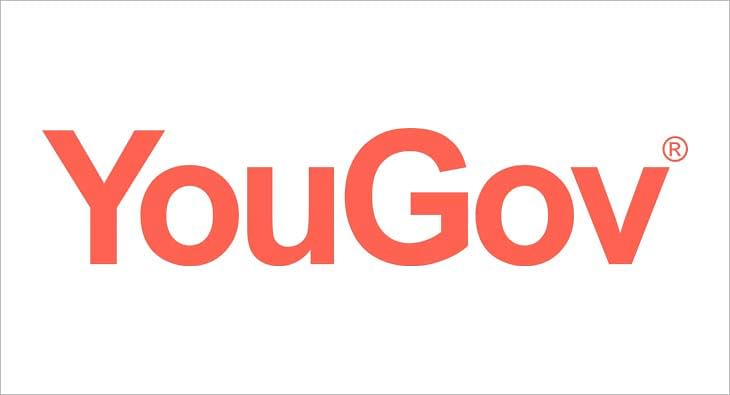
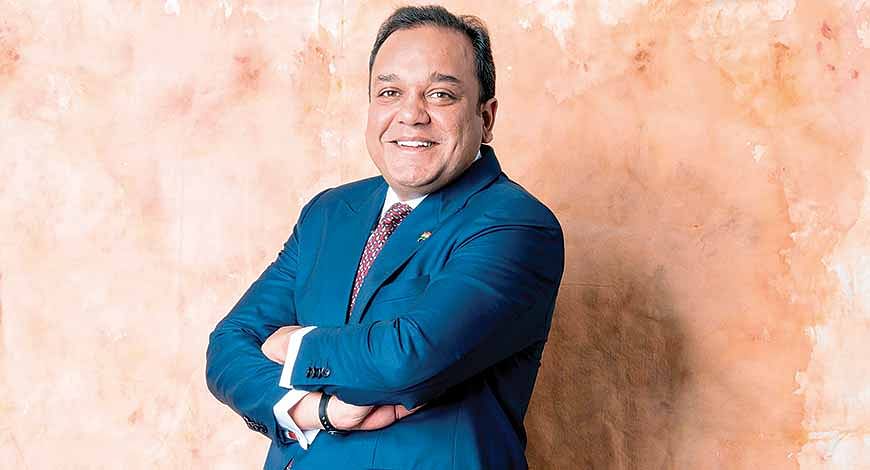
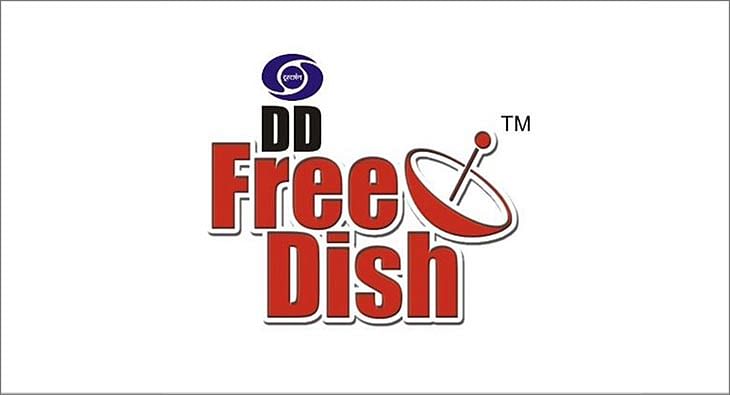







 Share
Share